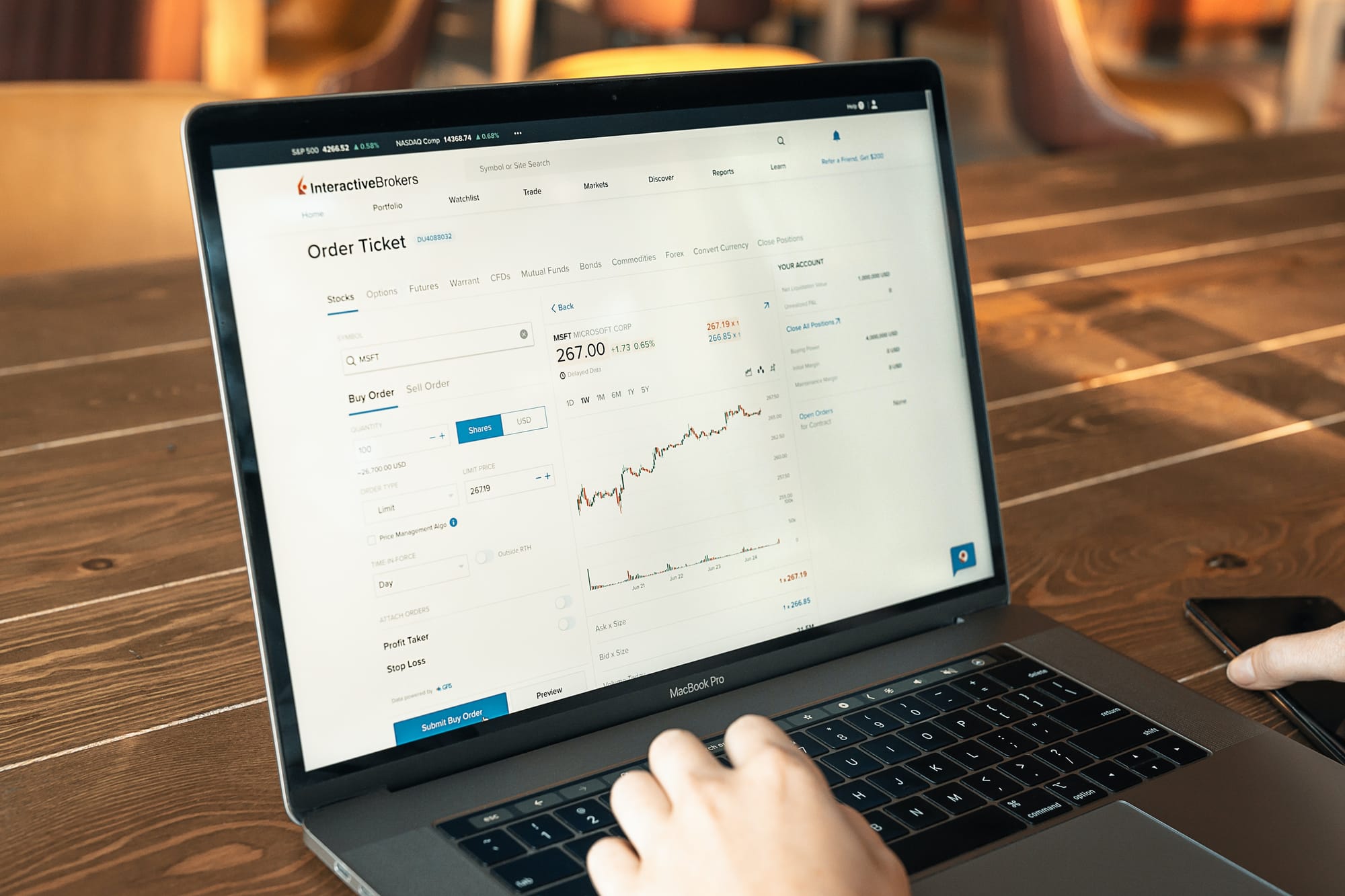Conversion Metrics Demystified: A Beginner's Guide
Whether it's a small business or a large enterprise, tracking and analyzing conversion metrics provide valuable insights into the performance and effectiveness of marketing efforts.

In today's digital age, understanding conversion metrics has become essential for companies to measure their success in implementing effective digital marketing strategies.
Whether it's a small business or a large enterprise, tracking and analyzing conversion metrics provide valuable insights into the performance and effectiveness of marketing efforts.
Conversion metrics are the key to unlocking the success of digital marketing campaigns. They encompass various data points that help businesses gauge their marketing strategies' effectiveness in reaching potential customers, generating leads, and turning those leads into loyal customers.
By tracking conversion metrics, companies can assess their marketing campaigns' return on investment (ROI), identify the most effective traffic sources, optimize conversion rates, and allocate marketing budgets more efficiently.
To stay competitive in today's crowded digital landscape, it is crucial for businesses to understand the relevance of tracking conversion metrics. It enables them to clearly understand their target audience, their preferences, and their buying behaviors.
By continuously monitoring conversion metrics, companies can identify trends, optimize their marketing efforts, and enhance the overall user experience.
Conversion metrics play a vital role in measuring the success of digital marketing strategies. They provide valuable insights that help businesses make informed decisions, optimize their marketing campaigns, and drive growth.
By understanding and tracking conversion metrics, companies can stay ahead of the competition and achieve their marketing goals more effectively.
- Definition Of Conversion Metrics
- Types Of Conversion Metrics
- Strategies For Improving Conversion Rates
- Bottom Line On Conversions
Definition Of Conversion Metrics
Conversion metrics refer to the various data points and measurements used by businesses to evaluate the effectiveness of their digital marketing strategies in generating leads and turning those leads into paying customers.

These metrics provide valuable insights into the success and efficiency of marketing campaigns, allowing companies to track their return on investment (ROI), identify the most effective traffic sources, optimize conversion rates, and allocate marketing budgets more efficiently.
By monitoring conversion metrics, businesses can better understand their target audience, preferences, and purchasing habits.
This knowledge enables companies to make data-driven decisions, identify trends, and enhance the overall user experience, ultimately leading to greater customer satisfaction and higher revenue.
Why Do Companies Need To Understand Conversion Metrics?
Conversion metrics play a crucial role in helping companies understand and measure the success of their marketing campaigns. By tracking various conversion metrics, businesses can gain valuable insights into how effective their marketing efforts are and make data-driven decisions to optimize their strategies.
One key benefit of understanding conversion metrics is the ability to conduct ROI (Return on Investment) analysis. By assessing the financial impact of marketing campaigns, businesses can determine the effectiveness of their marketing efforts and make informed decisions on where to allocate their resources for maximum return.
Conversion metrics also allow companies to optimize their marketing budgets. Businesses can identify the most cost-effective strategies by analyzing the performance of different marketing channels and campaigns and allocate their marketing budgets accordingly. This helps maximize the impact of marketing spend and eliminate wasteful expenses.
Furthermore, conversion metrics provide valuable insights into the effectiveness of online marketing strategies. By measuring metrics such as click-through rates, conversion rates, and engagement rates, companies can evaluate the success of their online campaigns and make data-driven decisions to improve customer acquisition and retention.
Understanding conversion metrics is crucial for companies to track the effectiveness of their marketing campaigns, conduct ROI analysis, optimize marketing budgets, and measure the success of online marketing strategies. By utilizing these metrics, businesses can make informed decisions to drive better results and achieve their marketing objectives.
Types Of Conversion Metrics
Understanding different types of conversion metrics is crucial for businesses to measure their marketing efforts and make data-driven decisions effectively.
One important conversion metric is the conversion rate, which measures the percentage of people who take a desired action, such as making a purchase or filling out a form, out of the total number of website visitors.
Another important metric is the average session duration, which calculates how much time users spend on a website. This metric provides insights into user engagement and your website's content and design effectiveness.
Additionally, the average customer lifetime value measures the total revenue a customer generates over their entire relationship with a business. This metric helps businesses understand the long-term value of their customer base.
By tracking and analyzing these conversion metrics, businesses can gain valuable insights into their marketing performance and make informed decisions to optimize their strategies for maximum conversion and revenue.
- Traffic Source Conversions
- Content Conversions
- Click-Through Rate (CTR)
- Cost Per Acquisition (CPA)
- Average Session Duration
- Organic Search Conversions
- Bounce Rate
- Return On Investment (ROI)
- Vanity Metrics Vs. Key Metrics
Traffic Source Conversions
In the ever-evolving world of digital marketing, understanding traffic source conversions is crucial. Traffic source conversions refer to the different channels through which website visitors arrive and eventually convert into customers. These sources include direct traffic, search traffic, referral traffic, and paid traffic.
Tracking and analyzing traffic sources is vital for businesses to identify which channels drive the most conversions. For instance, if a marketing campaign generates a high number of conversions from search traffic, it indicates that SEO efforts are effective.
On the other hand, if paid traffic sources contribute significantly to conversions, it highlights the success of paid advertising campaigns.
Diversifying traffic sources is essential to minimize risk and maximize conversion opportunities. Relying solely on one source puts businesses at the mercy of any changes in algorithms or trends.

Businesses can expand their reach and engage with a wider audience by exploring multiple channels, such as organic search, email campaigns, and social media posts.
Understanding the impact of different traffic sources is key to optimizing conversion rates and improving overall marketing efforts. By delving into analytics tools like Google Analytics 4, businesses gain insights into which sources generate qualified traffic, leading to higher conversion rates.
Traffic source conversions play a crucial role in digital marketing. By tracking and analyzing different traffic sources, businesses can optimize their marketing strategies and generate a higher number of conversions.
Diversifying traffic sources mitigates risks and expands audience reach, ultimately driving success in the conversion metric game.
Content Conversions
Content conversions refer to specific actions that website visitors take on a particular piece of content, indicating their engagement and interest. These conversions can be measured through various metrics, such as:
- Click-through Rate (CTR): Measures the percentage of users who click on a link or call-to-action within the content. It indicates how effective the content is in enticing users to take the next step.
- Time on Page: Measures the amount of time users spend on a particular page. Longer durations suggest that the content is valuable and engaging.
- Bounce Rate: Measures the percentage of users who leave the website after viewing a single page. A lower bounce rate implies the content is compelling enough to retain visitors.
- Social Shares: Measures the number of times the content is shared on social media platforms. It indicates the level of engagement and the potential reach of the content.
Tracking and analyzing content conversions is essential for understanding user engagement and optimizing marketing efforts. Businesses can identify the most engaging content and replicate its success by measuring these metrics. It also helps identify improvement areas, such as optimizing call-to-action placements or enhancing the content format.
Tracking content conversions allows businesses to gauge the effectiveness of their content marketing strategies. It provides insights into what resonates with the target audience and aids in making data-driven decisions.
By continually monitoring and optimizing content conversions, businesses can enhance user engagement, increase conversions, and drive better marketing results.
Click-Through Rate (CTR)
Click-through Rate (CTR) is a crucial conversion metric that measures the number of clicks on ad or website links relative to the number of impressions. It provides valuable insights into the effectiveness of ad copy, headlines, and meta descriptions.
CTR is commonly used in various marketing efforts, including email campaigns and paid advertising. In email campaigns, a high CTR indicates that the content resonates with the recipients and drives them to take action. Marketers can refine their email strategies by analyzing CTR and optimize the content to enhance engagement.
In paid advertising, CTR is an important metric for evaluating the performance of ads. A low CTR may indicate that the ad's messaging is not compelling enough to captivate the audience. At the same time, a high CTR suggests that the ad is effectively grabbing attention and enticing clicks.
CTR is also applicable to organic search and website content. Optimizing meta descriptions, headlines, and other textual elements to increase CTR can lead to higher organic traffic and better rankings in search engine results.
By analyzing CTR data, marketers can identify which aspects of their content attract the most clicks and tailor their strategies accordingly.
In summary, CTR is a valuable conversion metric that provides insights into the effectiveness of ad copy, headlines, and meta descriptions. It plays a crucial role in email campaigns, paid advertising, and the optimization of organic search efforts. Marketers can leverage CTR data to enhance engagement and drive higher click-through rates.
Cost Per Acquisition (CPA)
Cost per Acquisition (CPA) is a crucial conversion metric that measures the cost of acquiring a new customer. It provides businesses with valuable insights into the effectiveness and profitability of their marketing efforts.
CPA can be calculated by dividing total marketing costs by the number of customers acquired during a specified period. This metric considers all expenses associated with acquiring customers, such as advertising campaigns, marketing teams' salaries, and other marketing costs.
Analyzing CPA allows businesses to determine whether their acquisition efforts are efficient and cost-effective. Businesses can assess their profitability and make data-driven decisions to optimize their marketing strategies by comparing this metric to the revenue generated from acquired customers.
A low CPA indicates that a business is acquiring customers at a reasonable cost, maximizing their return on investment. On the other hand, a high CPA may indicate the need for adjustments in marketing campaigns, targeting strategies, or customer acquisition channels.

To improve CPA, businesses can focus on optimizing their marketing efforts. This may include refining target audience segments, enhancing landing page experiences, A/B testing various advertising campaigns, or investing more in channels that have shown promising results.
Cost per Acquisition (CPA) is an essential conversion metric that measures the cost-effectiveness of acquiring new customers. Analyzing CPA helps businesses assess their profitability and make informed decisions to optimize their marketing efforts for better results.
Average Session Duration
Average session duration is a conversion metric measuring the time visitors spend on a website. It provides valuable insights into user engagement and potential conversion rates.
Understanding the average session duration can help businesses gauge the effectiveness of their website in capturing and holding users' attention. A longer average session duration generally indicates higher user engagement and an increased likelihood of conversion.
On the other hand, a shorter average session duration may suggest that visitors are not finding the website relevant or engaging enough, potentially leading to lower conversion rates.
Several factors can influence the average session duration. Firstly, the quality of the website's content plays a crucial role. Informative, well-written content that meets the visitor's needs and keeps them engaged can lead to longer sessions.
An intuitive and visually appealing website design and a seamless user experience contribute to lengthier sessions.
To improve average session duration, businesses should focus on improving the quality of their content. This can be done by conducting thorough research, using persuasive language, and incorporating multimedia elements.
Optimizing website design and user experience by providing easy navigation, clear call-to-actions, and fast loading times is vital.
Average session duration is an important conversion metric, providing insights into user engagement and potential conversion rates. By focusing on factors influencing this metric, businesses can enhance the overall user experience and increase the likelihood of successful conversions.
Organic Search Conversions
Organic search conversions play a crucial role in the success of any online business. By tracking and analyzing these conversions using Google Analytics, businesses can gain valuable insights into the effectiveness of their organic search strategy and optimize their revenue-generating capacity.
To track organic search conversions, businesses need to set up Google Analytics on their website and enable the tracking of organic search traffic. This can be done by integrating Google Analytics with search engine data, such as Google Search Console. Once set up, businesses can access detailed reports on the organic search performance of their website.
Tracking organic conversion rates is important because it allows businesses to understand how effectively their organic search efforts translate into actual conversions.
By monitoring these rates, businesses can identify gaps or areas for improvement in their organic search strategy. This information can then be used to optimize keywords, content, and website design to increase conversions.

Businesses can access the Conversions and Pages and Paths reports in Google Analytics to analyze organic conversion events, conversions, and revenue by page.
In the Conversions report, businesses can view the number of organic conversions and the conversion rate for each goal or e-commerce transaction. In the Pages and Paths report, businesses can see which specific pages are driving the most organic conversions and revenue.
By closely monitoring and analyzing organic search conversions, businesses can make data-driven decisions to enhance their organic search strategy, drive more qualified traffic, and ultimately improve their revenue-generating capacity.
Bounce Rate
Bounce rate is a crucial metric in analyzing website performance and its impact on conversion rates. It represents the percentage of site visitors who leave the site immediately after arriving without engaging further or exploring additional pages. Understanding bounce rate is essential because it provides valuable insights into user behavior and helps identify areas for improvement.
One significant factor that influences bounce rate is website speed and performance. Visitors are more likely to bounce and seek alternatives if a website takes too long to load or is unresponsive.
Similarly, mobile usability plays a crucial role. With the increasing use of mobile devices, optimizing websites for different screen sizes and ensuring a seamless user experience is essential.
Additionally, the relevancy and quality of landing page content can significantly impact the bounce rate. If the content fails to meet visitors' expectations or doesn't provide clear information, they are more likely to leave without taking any further action.
Businesses can identify potential issues by analyzing bounce rates and optimizing their website to improve user engagement and conversion rates. This can include optimizing loading times, ensuring mobile responsiveness, and creating compelling landing page content encourages visitors to stay and explore further.
Monitoring and improving bounce rates can help businesses enhance user experience, retain visitors, and ultimately drive more conversions.
Return On Investment (ROI)
Return on Investment (ROI) is a metric that measures the profitability of digital marketing campaigns and helps businesses determine the effectiveness of their marketing efforts. By tracking ROI, companies can assess the return they get from the money invested in marketing channels and make informed decisions about resource allocation.
Calculating ROI in marketing can be challenging due to various factors. One significant challenge is the time lag between investment and return.
Marketing campaigns often take time to generate leads, nurture them into customers, and convert them into sales. This delay can make it difficult to attribute sales and revenue to specific marketing activities accurately.
:max_bytes(150000):strip_icc()/Investopedia_Returnoninvestmentformula_colorv1-6d281839c5814e109e316ebbbb61a5bd.png)
Another challenge lies in tracking the impact of multiple marketing channels. With businesses using various digital channels such as social media, email campaigns, and advertising, it becomes crucial to understand which channels drive the highest ROI.
However, accurately attributing conversions and sales to specific channels can be complex and requires advanced analytics tools.
Despite these challenges, tracking ROI is essential for businesses to make informed decisions about their marketing budget allocation. Companies can optimize their campaigns and focus their resources on the most effective strategies by understanding which marketing channels deliver the highest ROI.
Ultimately, monitoring ROI enables businesses to maximize their profitability in the digital landscape.
Vanity Metrics Vs. Key Metrics
When measuring the success of conversion metrics, it is essential to distinguish between vanity metrics and key metrics.
Vanity metrics refer to surface-level data that may appear impressive but have little relevance to the overall success of a marketing campaign. On the other hand, key metrics directly contribute to business goals and provide actionable insights.
One common example of a vanity metric is website traffic. While high traffic numbers may seem impressive at first glance, they often fail to provide meaningful insights into ROI.
More traffic does not necessarily translate into more conversions or revenue. Instead, focusing on key metrics that directly impact business objectives is crucial.
Key metrics, such as conversion rates, average customer lifetime value, or cost per acquisition, provide actionable data that can lead to informed decision-making.
These metrics demonstrate the effectiveness of marketing efforts in generating actual results. Businesses can accurately measure ROI and allocate resources to the most impactful marketing activities by focusing on key metrics.
Vanity metrics like website traffic may mask the true success of marketing campaigns. To effectively measure and optimize conversion metrics, businesses must prioritize key metrics that directly contribute to their goals, enabling them to make data-driven decisions and improve ROI.
Strategies For Improving Conversion Rates
Improving conversion rates is crucial for any business aiming to maximize its online presence and drive revenue. Conversion rates refer to the percentage of website visitors who take a desired action, such as making a purchase or subscribing to a newsletter.
High conversion rates indicate that marketing efforts effectively turn potential customers into actual customers. To optimize conversion rates, businesses can employ various strategies.
Firstly, enhancing the user experience of a website or landing page can significantly impact conversion rates. Simplifying navigation, streamlining the checkout process, and ensuring fast load times can improve overall user satisfaction and encourage conversions.

Additionally, businesses should analyze and understand their target audience to tailor marketing campaigns that resonate with their needs and preferences. Compelling content, persuasive call-to-actions, and personalized offers can motivate visitors to take the desired action.
Furthermore, implementing conversion rate optimization (CRO) techniques, such as A/B testing and heat mapping, allows businesses to experiment with different elements and continuously optimize their conversion strategies.
By consistently monitoring and analyzing key metrics, businesses can identify areas for improvement and make data-driven decisions to boost conversion rates. Combining user-focused design targeted marketing strategies, and continuous optimization can help businesses achieve higher conversion rates and ultimately drive greater success.
Optimizing Your Sales Funnel
Optimizing your sales funnel is crucial to maximize conversion rates and increase revenue. One important aspect to address is the checkout process. A cumbersome and complex checkout procedure can be a major deterrent for potential customers.
Simplifying the path to conversion by reducing the number of steps and form fields can significantly impact conversions.
Another issue to tackle is load times. Slow-loading pages can lead to frustration and abandonment. It is essential to optimize your website's performance to provide a seamless and efficient experience for users.
Additionally, resolving any technical glitches or issues with shopping carts can help prevent potential customers from abandoning their purchases.
In addition to these strategies, leveraging sales enablement tools like Hushly's is recommended. These tools can help generate qualified leads, nurture those leads throughout the sales journey, and ultimately close deals.

By automating and streamlining the lead generation and nurturing process, sales enablement tools can greatly improve the efficiency and effectiveness of your sales efforts.
Optimizing your sales funnel by addressing checkout process issues, improving load times, and resolving shopping cart problems can significantly impact your conversion rates.
Also, leveraging sales enablement tools like Hushly's can help generate qualified leads and close deals more effectively. You can ensure a smooth customer journey and maximize your conversion metrics by continuously optimizing your sales funnel.
Leveraging User Experience (UX) Design
Leveraging user experience (UX) design is a powerful way to improve conversion metrics and enhance the overall success of your website or app.
By creating a user-centered design that removes blockers and optimizes conversions, businesses can provide users a seamless and enjoyable experience, ultimately leading to higher conversion rates.
First and foremost, a user-centered design places the needs and preferences of the user at the forefront. By understanding the target audience and their behaviors, UX designers can create intuitive interfaces and navigation structures that enable users to find what they want and complete desired actions easily.
This includes streamlining the checkout process, reducing form fields, and simplifying complex tasks to minimize friction and increase conversions.
To obtain a comprehensive understanding of the user experience, it's important to combine quantitative metrics with qualitative insights. While quantitative metrics like click-through rates, time on page, and bounce rates provide valuable data, they do not always reveal the why behind user behaviors.

Qualitative insights, such as user feedback, surveys, and usability testing, help uncover pain points, frustrations, and areas for improvement that quantitative data alone cannot capture.
Incorporating these insights into the UX design process empowers businesses to address blockers, improve user satisfaction, and optimize conversions.
Therefore, leveraging user experience design is vital for improving conversion metrics. By adopting a user-centered design approach, addressing blockers, and combining quantitative metrics with qualitative insights, businesses can create a seamless and enjoyable user experience that optimizes conversions and drives success.
Bottom Line On Conversions
In conclusion, understanding and tracking conversion rate as a marketing metric is crucial for businesses. The conversion rate measures the percentage of visitors who take a desired action, such as purchasing or filling out a form. It helps companies evaluate the success of their marketing efforts and determine the return on investment.
By improving conversion rates, businesses can boost their revenue and increase the effectiveness of their marketing campaigns.
Conversion rate differs from click-through rate, as it goes beyond a simple click on an ad or website link. While click-through rate measures the number of clicks relative to the number of impressions, conversion rate measures the number of conversions relative to the number of visitors or clicks.
This makes conversion rate a more valuable metric, providing a clearer understanding of how marketing efforts directly impact business results.
To improve conversion rates, businesses should optimize the sales funnel by identifying and addressing bottlenecks or points of friction in the customer journey.
They should also leverage user experience design to create intuitive interfaces and streamlined processes that enable users to convert easily. Personalization, targeted messaging, and A/B testing can significantly impact conversion rates.
Overall, understanding conversion rate as a marketing metric and implementing effective strategies can help businesses achieve their marketing goals, increase revenue, and maximize the impact of their marketing efforts.





